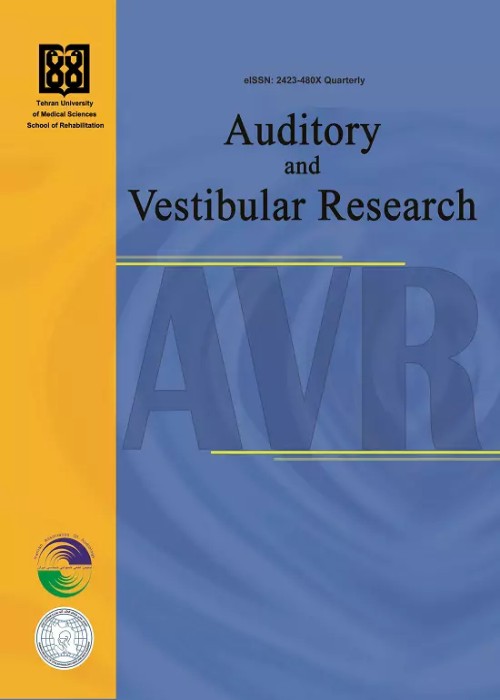A comparison between morphological and syntactic features of 4 to 5 years old in education severe to profound hearing impaired and normal children
Author(s):
Abstract:
Background And Aim
Learning Language is a skill which is acquired in early childhood. So, language gradually developed and new words and new structures slowly added to language knowledge. Hearing sense is the most important acquisition for of language and hearing disorder is a barrier for natural language acquiring. The purpose of this study is comparison between morphological and syntactic features of 4 to 5 years old severe to profound hearing impaired and normal children. Materials And Method
This cross-sectional study performed on 10 normal-hearing children with mean age of 4-5, from Gazvin kindergartens and 10 hearing impaired children with similar IQ and age from Nioosha Rehabilitation Center. The language and non language information was received by spontaneous and descriptive speech, and questionnaire, respectively and for comparing syntax comprehension, Specific language impairment test was used. Then these results were compared between two groups. Results
Difference between spontaneous speech and descriptive speech in hearing impaired child is just like normal child. These differences are that the number of utterance, the mean of lexical morpheme, functional morpheme in spontaneous speech is greater than descriptive speech but the mean length of utterance and richness of vocabulary in descriptive speech is greater than spontaneous speech. Mean of lexical morpheme, functional morpheme and richness of vocabulary related to morphological part and the number of utterance, the mean length of utterance and syntax comprehension related to syntax, in spontaneous and descriptive speech of normal children speech is greater than hearing impaireds`. Conclusion
According to recent researches, compared with normal child, the hearing impaired child nearly never to reach equal level, and for this reason, training for this group is necessary. It is concluded that although these children have severe to profound hearing loss they are developing their language by auditory training, hearing aid, language therapy and educational assistance and they only have delay in period of language learning. In the other words, language growth of a 4-5 year old hearing impaired child is almost similar to a 3 year old normal child.Language:
Persian
Published:
Auditory and Vestibular Research, Volume:15 Issue: 2, 2007
Pages:
23 to 29
magiran.com/p457371
دانلود و مطالعه متن این مقاله با یکی از روشهای زیر امکان پذیر است:
اشتراک شخصی
با عضویت و پرداخت آنلاین حق اشتراک یکساله به مبلغ 1,390,000ريال میتوانید 70 عنوان مطلب دانلود کنید!
اشتراک سازمانی
به کتابخانه دانشگاه یا محل کار خود پیشنهاد کنید تا اشتراک سازمانی این پایگاه را برای دسترسی نامحدود همه کاربران به متن مطالب تهیه نمایند!
توجه!
- حق عضویت دریافتی صرف حمایت از نشریات عضو و نگهداری، تکمیل و توسعه مگیران میشود.
- پرداخت حق اشتراک و دانلود مقالات اجازه بازنشر آن در سایر رسانههای چاپی و دیجیتال را به کاربر نمیدهد.
In order to view content subscription is required
Personal subscription
Subscribe magiran.com for 70 € euros via PayPal and download 70 articles during a year.
Organization subscription
Please contact us to subscribe your university or library for unlimited access!


